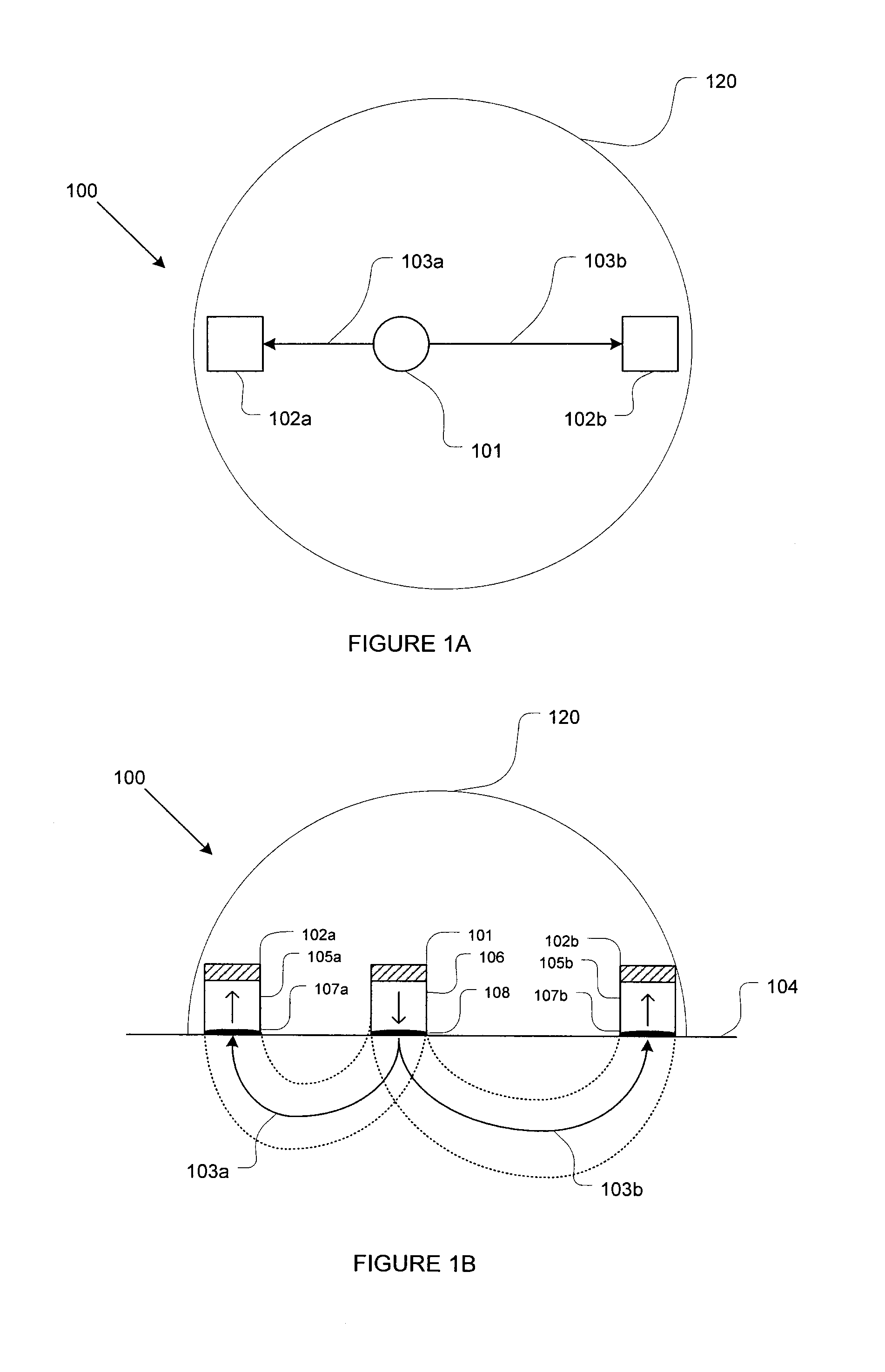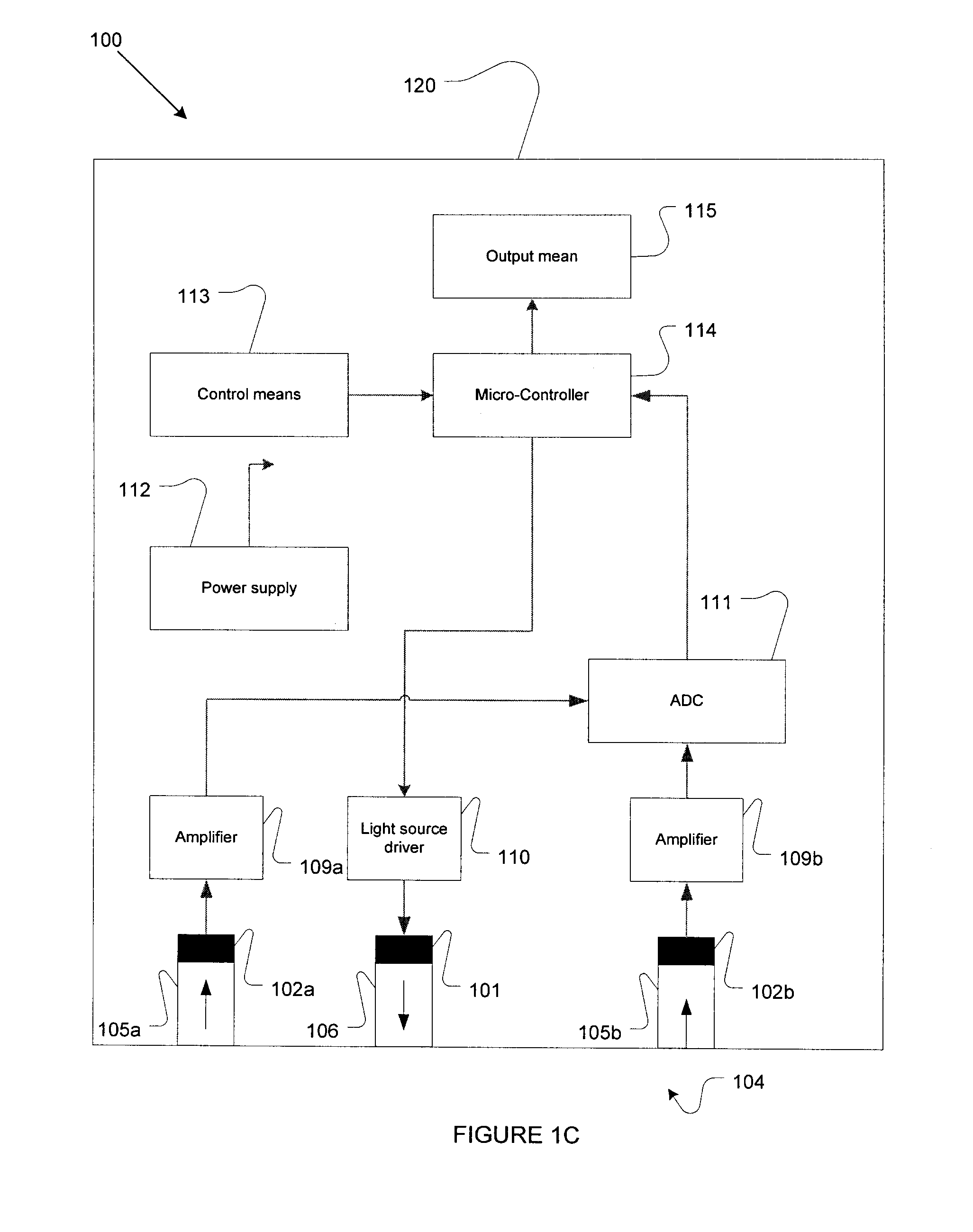Non-invasive pressured probing device
- Summary
- Abstract
- Description
- Claims
- Application Information
AI Technical Summary
Benefits of technology
Problems solved by technology
Method used
Image
Examples
first embodiment
Probing Device
[0046]Physiological optical probes are placed in pressure contact with the tissue under monitor so as to reduce index mismatch and increase light transmittance and, as mentioned above, the optical tissue responses of such probes however can be very sensitive to the application of pressure. The pressure applied to a probing device worn by a patient can vary greatly both from patient to patient and over time for a given patient, and for example depend on the manner in which the device is attached to the patient, the location of the device on the patient's body, the type of clothing worn over the device, external forces accidentally applied on the device by the patient or his surroundings, etc. It has been found that the detrimental effects of these pressure variations can be greatly alleviated by providing the probe within a housing having a protruding member (i.e. part), either fixed or variable, that applies either a fixed minimum or a controlled pressure on the tissue...
second embodiment
Probing Device
[0055]An alternative embodiment of a probing device according to the present invention is illustrated in FIG. 4. This embodiment may be preferred for physiological probes based on optical spectroscopy such as those demonstrated in the following: U.S. Pat. No. 7,133,710, U.S. Pat. No. 7,039,447, U.S. Pat. No. 6,865,408. In this embodiment, the housing 400 of the probing device 499 also includes a body 410, a protruding member 416, housing a sensing interface 420, and an adhesive layer 408, with the difference that the protruding member 416 is resiliently biased within the body 410. The housing may further include a resilient mechanism for resiliently biasing the resilient protruding member against the body of the housing. Here the housing is dome-shaped, but of course the housing may have any appropriate shape. In the illustrated embodiment of FIG. 4, a spring 404 is shown biasing the resilient protruding member 416 against the body 410 of the housing 400, but other res...
third embodiment
Probing Device
[0079]Referring to FIG. 8, there is shown a schematic cross-sectional view of another embodiment of a non-invasive probing device 899. This embodiment has a rigid protective cover in addition to the housing.
[0080]In order to reduce or eliminate the detrimental effects of external vibrations, shocks and forces on the measurements taken by the non-invasive probing device, it may be desirable to insulate the probing device from these unwanted external vibrations, shocks. Advantageously, the protective cover serves to insulate the probing device so as to reduce its sensitivity to these unwanted influences.
[0081]The rigid protective cover 810 encloses the body 804 of the physiological probe. It has a top surface 812, lateral walls 813A and 813B, a bottom skin-side surface 814 that is generally flat for lying against the skin 820 of the patient, and an outlet 818 in the bottom surface 814 for allowing the resilient protruding member 816 to protrude therefrom. Preferably, the...
PUM
 Login to View More
Login to View More Abstract
Description
Claims
Application Information
 Login to View More
Login to View More - R&D
- Intellectual Property
- Life Sciences
- Materials
- Tech Scout
- Unparalleled Data Quality
- Higher Quality Content
- 60% Fewer Hallucinations
Browse by: Latest US Patents, China's latest patents, Technical Efficacy Thesaurus, Application Domain, Technology Topic, Popular Technical Reports.
© 2025 PatSnap. All rights reserved.Legal|Privacy policy|Modern Slavery Act Transparency Statement|Sitemap|About US| Contact US: help@patsnap.com



